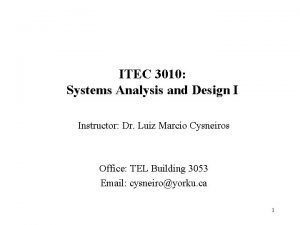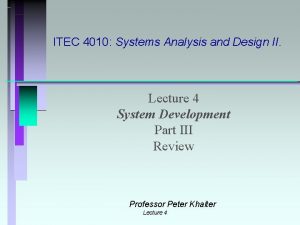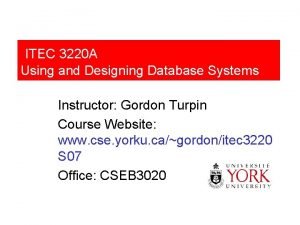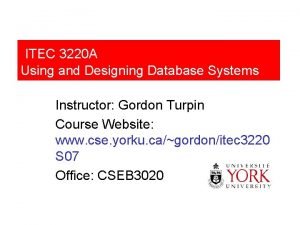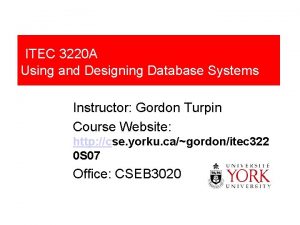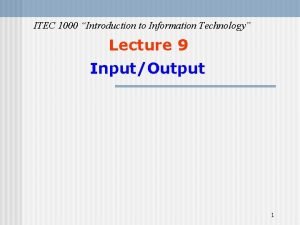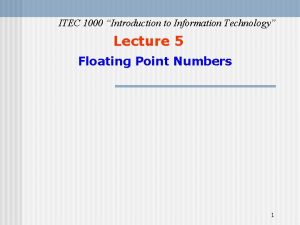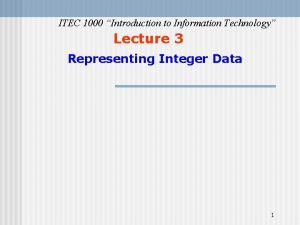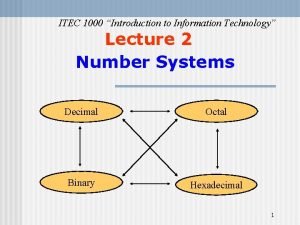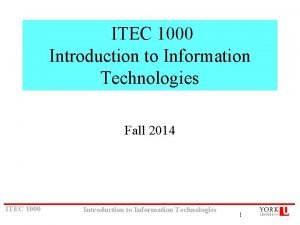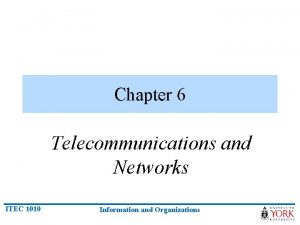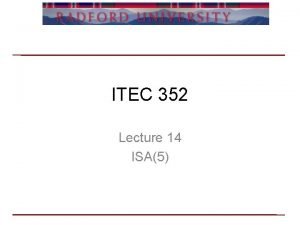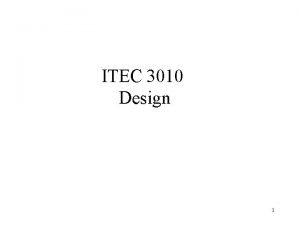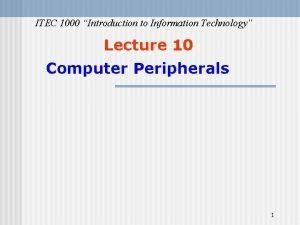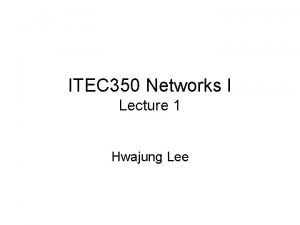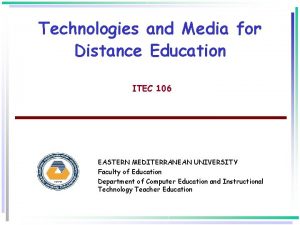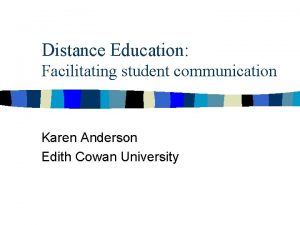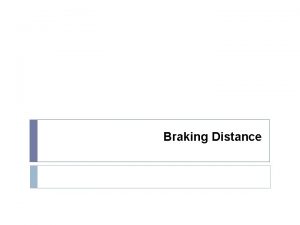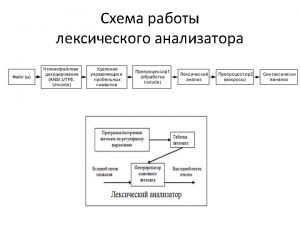Computer II ITEC 106 Distance Education Facilitating student

















- Slides: 17

Computer II ITEC 106 Distance Education: Facilitating student communication EASTERN MEDITERRANEAN UNIVERSITY Faculty of Education Department of Computer Education and Instructional Technology Teacher Education

Overview q Aim: § to demonstrate effective communication with and between distant students q Objectives: § introduce some communication methods for distance education students § demonstrate use of an electronic bulletin board for discussion and assessment q Learning outcome: § understand stages of development in emoderated discussion § use an electronic bulletin board for class discussion

Communication tools q Asynchronous: § § § Telephone - individual Email – individual or group Print – group Web page - group Electronic Bulletin Boards or Computer Moderated Conferencing - group q Synchronous: § Chat rooms - all participants log on at once

Overcoming isolation q q Distance education students often feel very isolated Overcoming this isolation is a big challenge Good access to a tutor is essential It is most helpful if students can communicate with each other, building their own learning community

Chat rooms q can be difficult to organise across time zones q discussion can lack depth (limited by keyboard skills) q it takes skill by the moderator to plan the session and control the discussion q large groups can be broken up into smaller groups and sent to other rooms for short sub-discussions q ask them to return and report to the whole group at a particular time q The chat session can be captured & posted to a BB for those who can’t attend

Social chat q Students can also use chat rooms to meet others at pre -arranged times without their tutor for § Friendly “café” chat sessions § Informal study groups § Requires some leadership by individuals who want to start a study group

Electronic Bulletin Boards q E-moderator (tutor) and individuals contribute at their convenience q Allows more reflective contribution than chat rooms q Contributions are preserved q Boards may be multipurpose: social and study; OR q Special boards can be set up for particular tasks or discussion groups q The e-moderator can set deadlines for tasks

Model of teaching and learning online (Salmon, 2000. p. 25)

Stage 1: access & motivation q Learning about the benefits of computer moderated discussion boards q Learning about the course requirements q Setting up and configuring software q Navigating to the BB q Be prepared to provide help or to direct participants to a help desk

Stage 2: social introductions q Overcoming shyness and making introductions q Some enjoy being ‘faceless’ q Others will ‘lurk’ for a while before they have the courage to contribute q Introducing netiquette q Make sure participants understand the need to protect their own privacy and respect others’ privacy

Rules for discussion groups q Be courteous: participate responsibly q Participate actively q Write clearly q Build ideas on what others say q Question the opinions of others q Actively read and question the text q Be credible: back up your statements q Stick to the subject (Based on Shoop, 1999)

Stage 3: information exchange q q q Learning to use the information resources supplied Learning to search & use the Internet Sharing information Helping others with solutions to problems Information overload may become a problem Silence is OK, but be alert for dropouts

Stages 4 & 5: knowledge construction & development q Students interact and respond much more participatively q Students take responsibility for their own learning § Introduce new discussion threads § Suggest alternative approaches § Support each other q E-moderator becomes a participant, not a tutor

Evaluation q Provide opportunities for § students to reflect on their own learning and contribution § feedback on the learning experience § evaluation of your performance as e-moderator q Reflect and revise your e-moderating strategies

References Salmon, Gilly. (2000). E-moderating: the key to teaching and learning online. London: Kogan Page. ISBN 0 7494 3110 5 http: //oubs. open. ac. uk/e-moderating/ Palloff, Rena M. and Pratt, Keith. (2001). Lessons from the cyberspace classroom: the realities of online teaching. San Francisco: Jossey Bass. ISBN 0 7879 5519 1

References and Resources Berge, Z. and Collins, M. Resources for moderators and facilitators online http: //www. emoderators. com/moderators. shtml Handbook for Instructors on the use of electronic class discussions http: //www. osu. edu/education/ftad/Publications/e lecdisc/pages/home. htm Shoop, Linda. (2000). Developing interactive competence with student centered discussion. [Draft Manual] http: //home. kiski. net/~dwright/scd/guid. html

Thank you for attention -17 -

